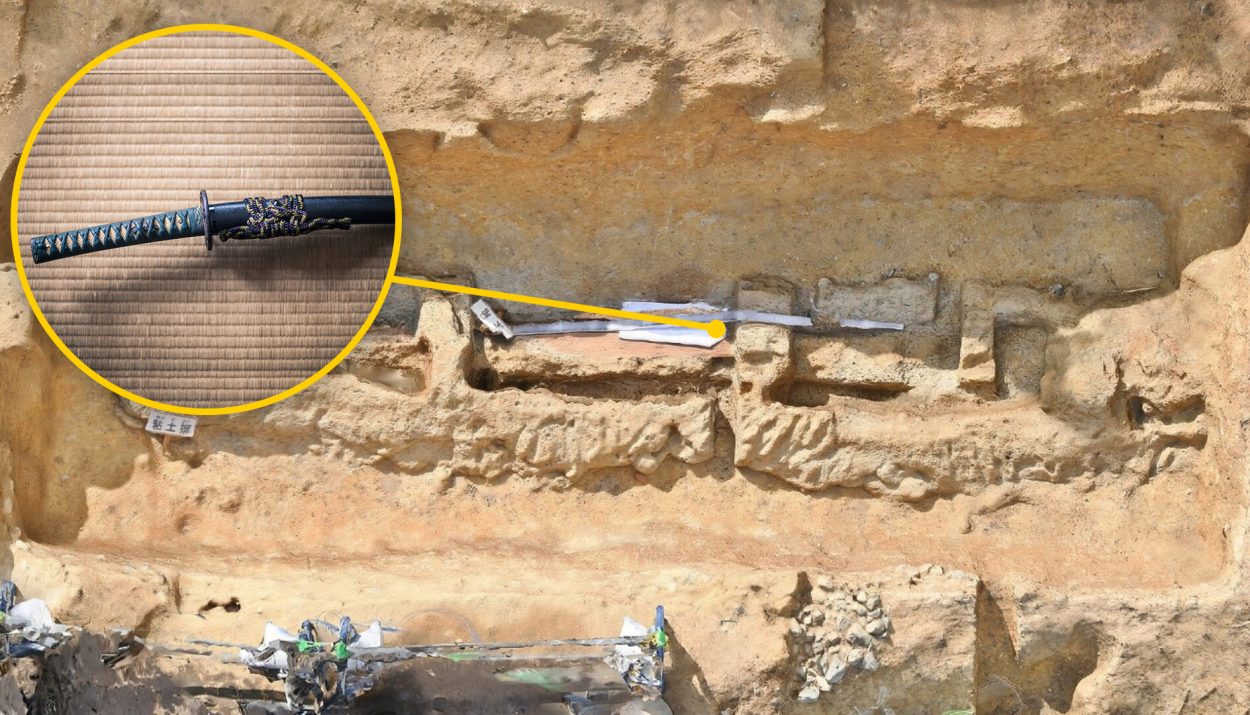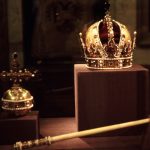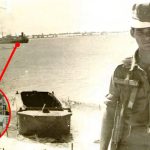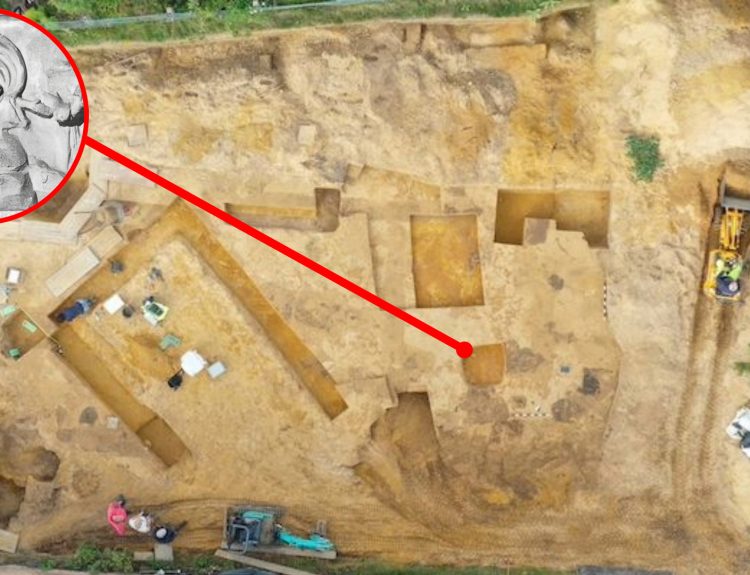From time to time, archaeologists make discoveries that force researchers to adjust the timelines of history. A recently discovered sword and bronze mirror at an archaeological site in Japan have done just that. The artifacts, unearthed at the Tomio Maruyama Burial Mount in Nara late last year, are not only massive, but are historically significant.
The newly discovered sword, a “dako” sword, dates to the 4th century. At 7-feet, 9-inches long, this isn’t just the largest blade unearthed in Japan … it is the longest sword ever found in East Asia. The find has made researchers rethink what they thought they knew about metalworking in ancient Japan.
The Tomio Maruyama Burial Mound
The Tomio Maruyama Burial Mound is located in Nara, not far from Osaka, Japan. At 357-feet in diameter, it is the largest burial mound in Japan and was created in the latter part of the 4th century. According to Naohiro Toyoshima, a professor of archaeology at Nara University, it is believed that the burial mound belonged to a prominent person associated with the Yamato rulers of the day.
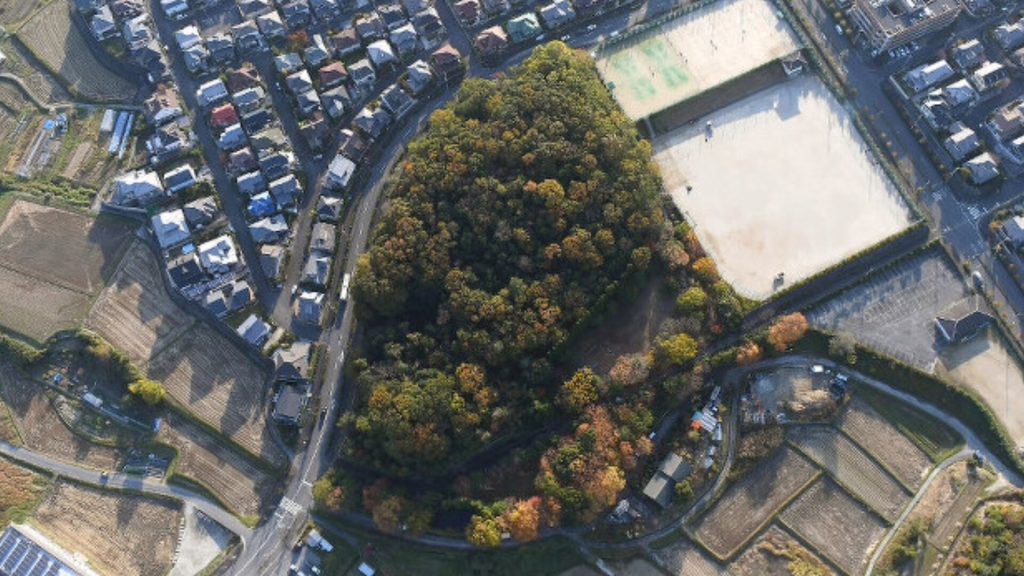
Excavations have been ongoing at the archaeological site for several years. Both the Nara Municipal Buried Cultural Properties Research Center and the Nara Prefectural Archaeological Institute of Kashihara oversee the work at the site.
A Previously Looted Site
According to the researchers, the Tomio Maruyama Burial Mound had been disturbed, looted by treasure hunters sometime during the Meiji era, which extended from 1868 to 1912. The top of the mound had been dug away and some of the artifacts were stolen.
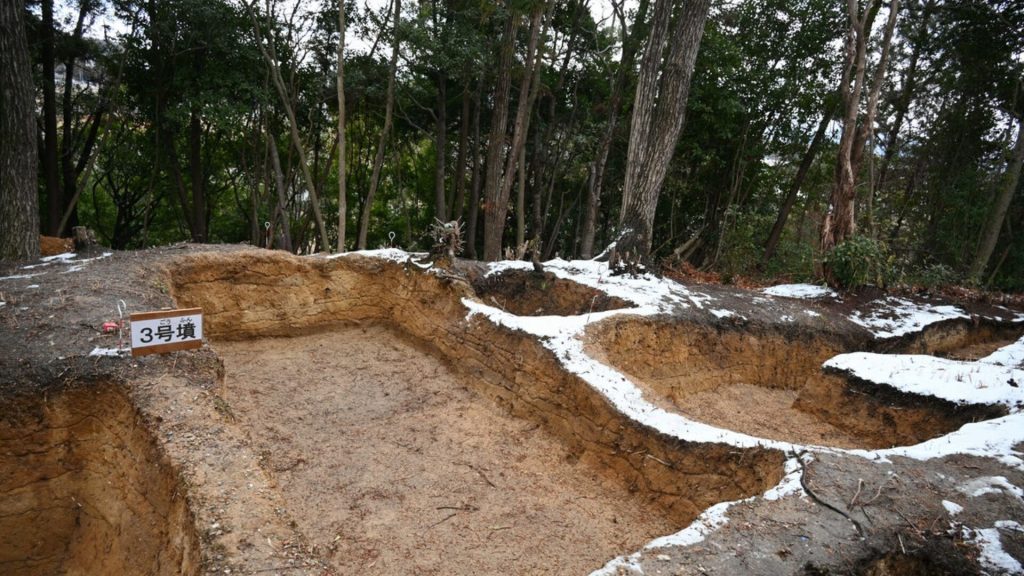
The current excavation work at the burial mound began in 2018. Before the archaeologists started digging, however, they mapped the site using aerial laser scans to pinpoint the exact dimensions of the mound and define its structure.
The Most Recent Season of Digging
The most recent dig at the Tomio Maruyama Burial Mound focused on a square-shaped outcropping on the northeast side of the mound, called the Tsukuridashi area. Here, the archaeologists discovered a grave that appears to have been dug into a layer of gravel and small stones during the construction of the burial mound.
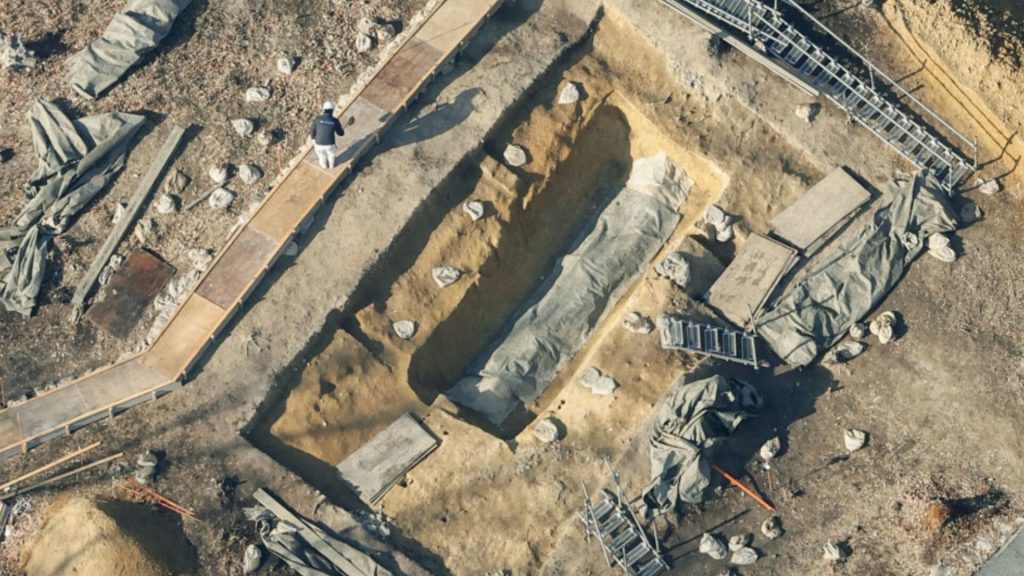
In this burial pit, they found a clay-covered coffin. The coffin was made from koyamaki, or umbrella pine wood and measured an astonishing 16-feet, 4-inches in length. Professor Toyoshima explained that this was likely the grave of a person close to the person for whom the burial mound was made … a member of the military, based on the discovery of an ancient sword.
Japan’s Kofun Period
The Kofun period in Japanese history spanned from the 3rd through the 7th centuries. During this time, Japan was not a unified nation but included various groups of people in tribal or clan-like communities. Tribal leaders held significant power in their regions.

During this Kofun period, large, keyhole-shaped burial mounds and monumental tombs were constructed. It was also a time when metalworking was introduced, and significant advances were made in agriculture. Metal artifacts and other valuable items were added to burial tombs to signify status, power, and to provide the deceased with tools needed for the afterlife.
An Unbelievable Discovery
In the gravesite found at the Tsukuridashi area, archaeologists made an important double discovery – an iron sword and a large mirror. As Professor Toyoshima explained, both items represent historically significant finds.
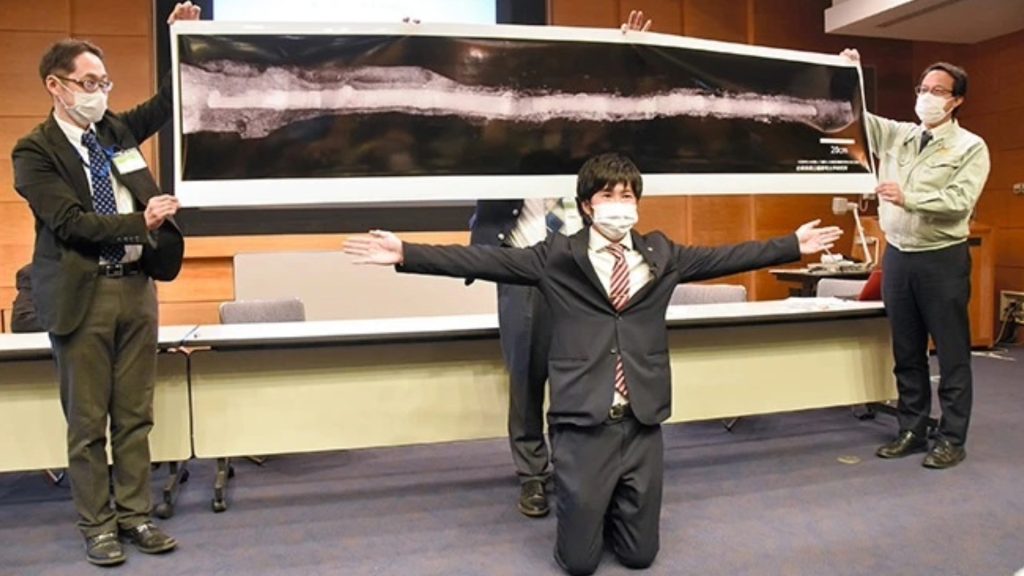
The sword is the largest “dako” sword ever discovered in Japan and the mirror, a shield-shaped bronze object, is the first of its kind ever found in the country.
What Is a Dako Sword?
To date, about 80 dako swords have been found at locations across Japan. The dako name – a Japanese term for ‘dragon’ – describes the serpentine-like waviness of the sword. Most likely, dako swords were symbolic weapons that were intended to help the deceased do battle against evil spirits in the afterlife.
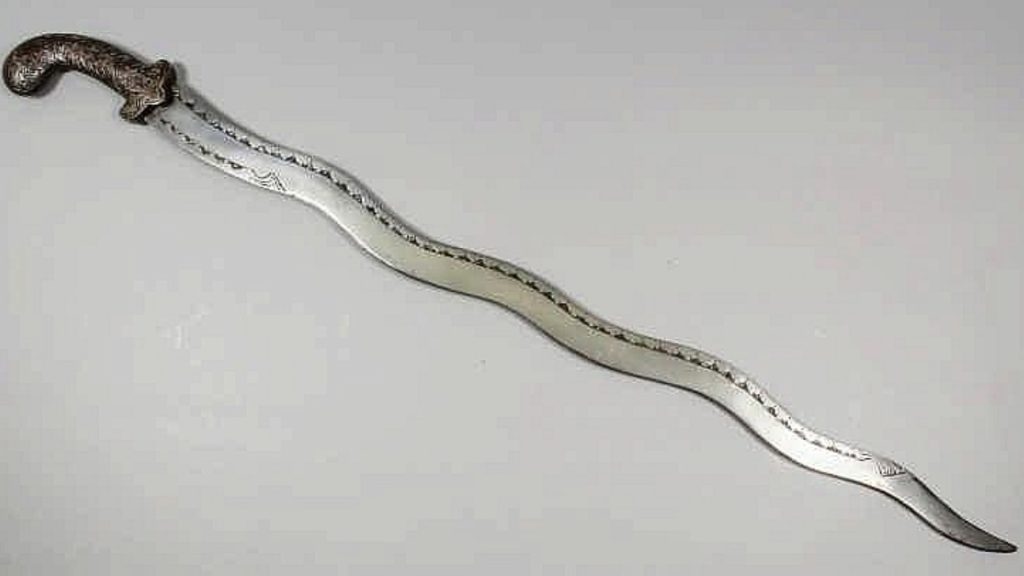
According to the researchers, it appears that the dako sword found at the Tomio Maruyama Burial Mound was not used in battle but was crafted to accompany the deceased in his grave. Part of the reason why researchers believe this is the extraordinary size of the sword.
The Largest Sword in East Asia
The recently discovered sword is 7-feet, 9-inches in length and two and one-third inches wide. It is more than twice the length of a sword that previously held the record for the longest one in Japan. That blade, which dated to the late 5th century, was unearthed in a burial mound near Hiroshima.
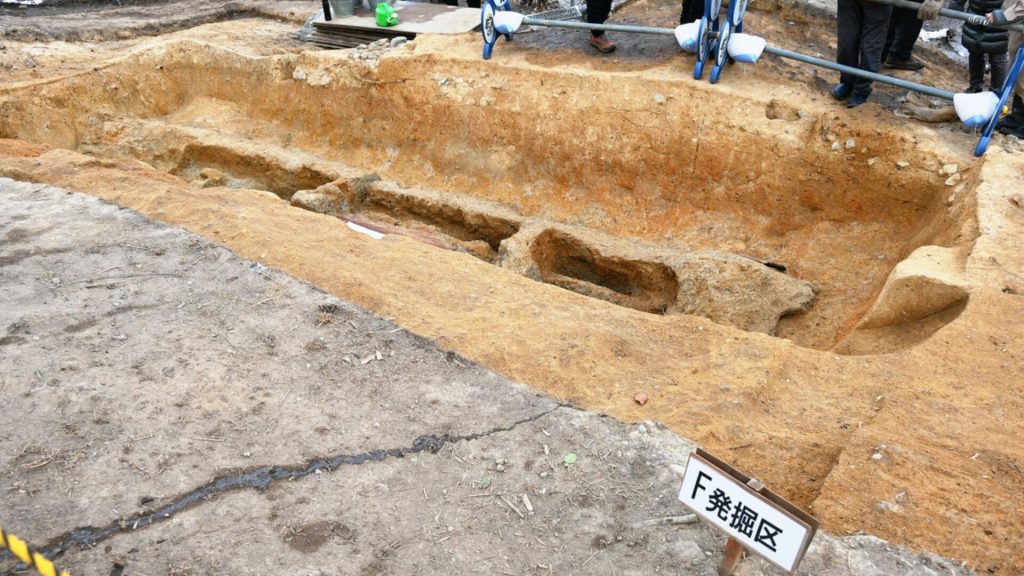
The sword was made of iron and the metal had been hammered, bent, and shaped to give it the wavy appearance that was common in dako swords. When it was discovered, there were small remnants of organic material found with it which most likely formed a sheath.
The Mirrored Shield
The shield that was discovered with the dako sword at the Tomio Maruyama Burial Mound is unlike any other shield found in Japan. Made of bronze, the mirror is two-feet long and about one-foot wide. Its size makes it the largest mirror of the Kofun period ever discovered.
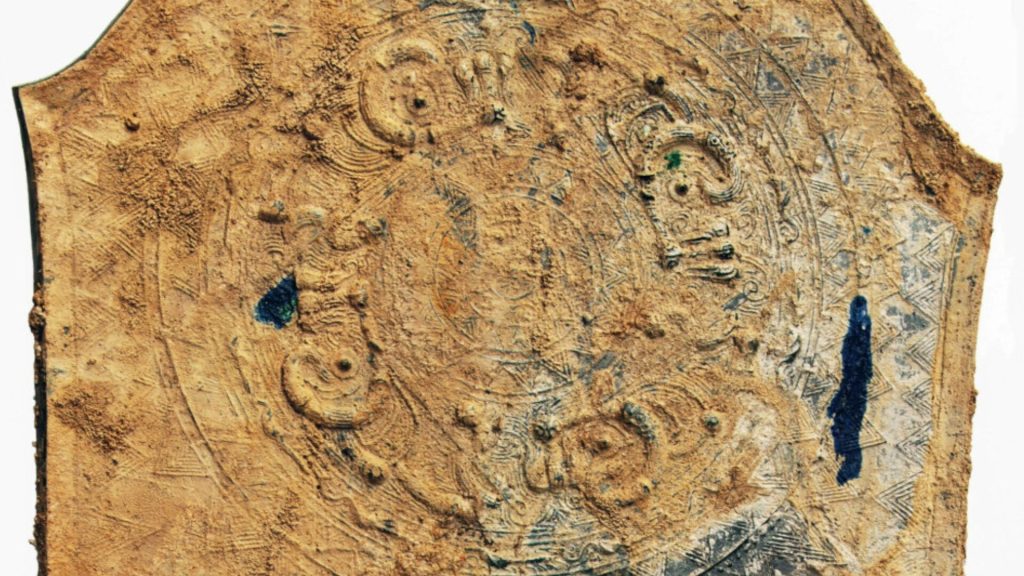
Although it appears to be a mirror, the object has a handle at its center, indicating it was used as a shield. The shiny, reflective surface may have been used to confuse and blind the enemy with reflected light, but like the dako sword, this item probably never saw battle. The back of the shield is adorned with engravings of dragons and geometric shapes.
A One-Of-A-Kind Discovery
The mirror is similar to previously found ‘daryu’ mirrors, however, one notable feature of the shield is its shape. Most mirrored shields of the time period were round, but this one is rectangular in shape. It has a more shield-like appearance.
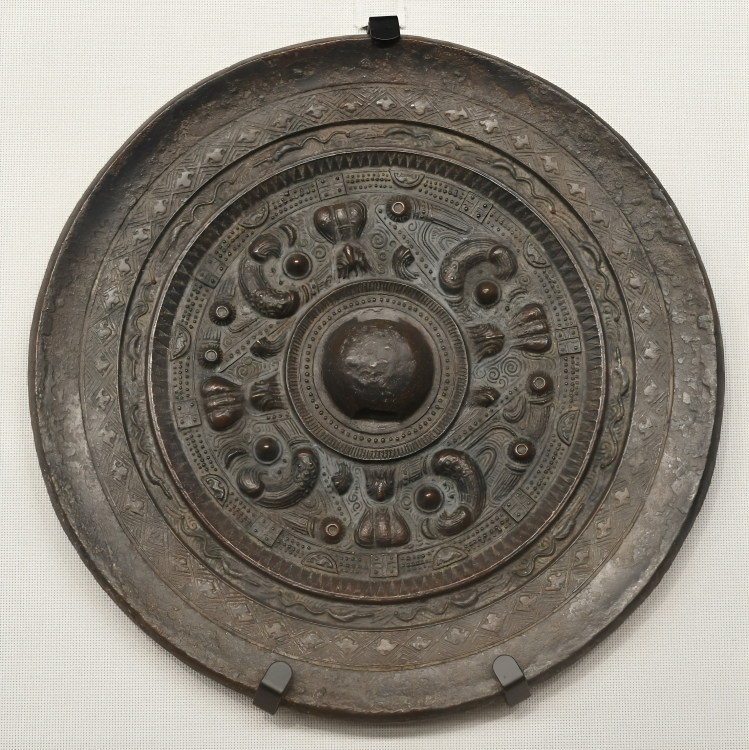
Daryu mirrors have been typically found in western Japan. One of the characteristics of this type of mirror is that they include designs of powerful mythical creatures. The dragon motif on the back of this mirror fits that style.
Tools for the Afterlife
When the clay-covered coffin was opened, the archaeologists noted that the mirror had been arranged diagonally with the shiny side facing down. The dako sword was placed longways in the coffin. Both items were important tools for the afterlife.
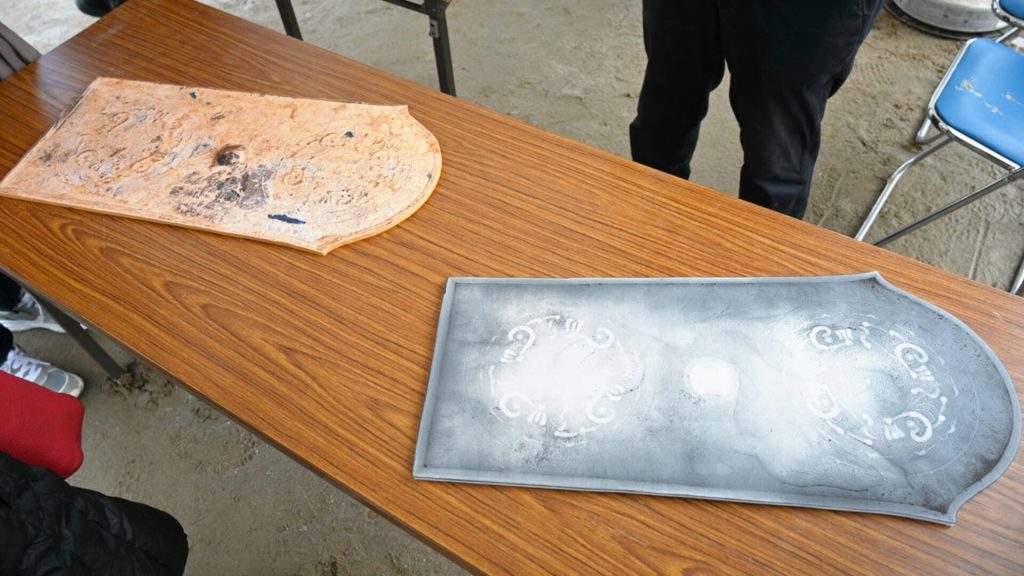
As the researchers explained, the sword and shield were powerful tools to help protect the person from evil spirits and to give him the items he would need to battle these evil spirits in the afterlife. Both the dako sword and the shield were, they believe, purposely enlarged to provide extra protection to the deceased.
“Masterpieces in Metalwork“
Metalworking was in its infancy in Japan during the Kofun Period. Iron objects were crudely made at this time … at least that’s what previous data indicated. The daka sword and bronze mirror discovered at the Tomio Maruyama Burial Mound have changed the established timeline.

According to Kosaku Okabayashi, the deputy director of the Nara Prefecture’s Archaeological Institute of Kashihara, the discovery of the sword and shield “indicate that the technology of the Kofun Period are beyond what had been imagined, and they are masterpieces in metalwork from that period.”
Metalworking in the 4th Century
The ability to craft metal into tools, weapons, and household objects marked an important advancement in human history. In various parts of the world, however, metalworking skills and techniques varied greatly. In ancient Rome, for example, metalworkers used casting, forging, stamping, and engraving techniques to make coins and jewelry.

In China, innovations like the blast furnace were created to produce iron objects. In India’s Gupta Empire of the 4th century, artists were creating intricate gold and silver objects using sophisticated alloying methods. The refinement of metalworking techniques of the 4th century helped set the stage for further advancements in the next few centuries.
An Impressive Undertaking
Crafting an iron sword of this size and quality would have been an ambitious undertaking for metalworkers during the Kofun Period. Unless, of course, they were more skilled than previously thought. The craftsmanship evident in both pieces shows that their makers had more than a rudimentary understanding of metal working.

As Riku Murase, one of the archaeologists at Nara Prefecture’s Archaeological Research Center, explained, the work that went into making the sword and shield was extraordinary for the time period in which they were made and “changes everything historians and archaeologists thought they knew about the period.”
New National Treasures
As Murase noted, the discovery of the dako sword and the daryu mirror have forced researchers, archaeologists, and historians to rethink the skill levels of the people of ancient Japan. Perhaps the current timeline for achievements that has been widely accepted by scholars is wrong.
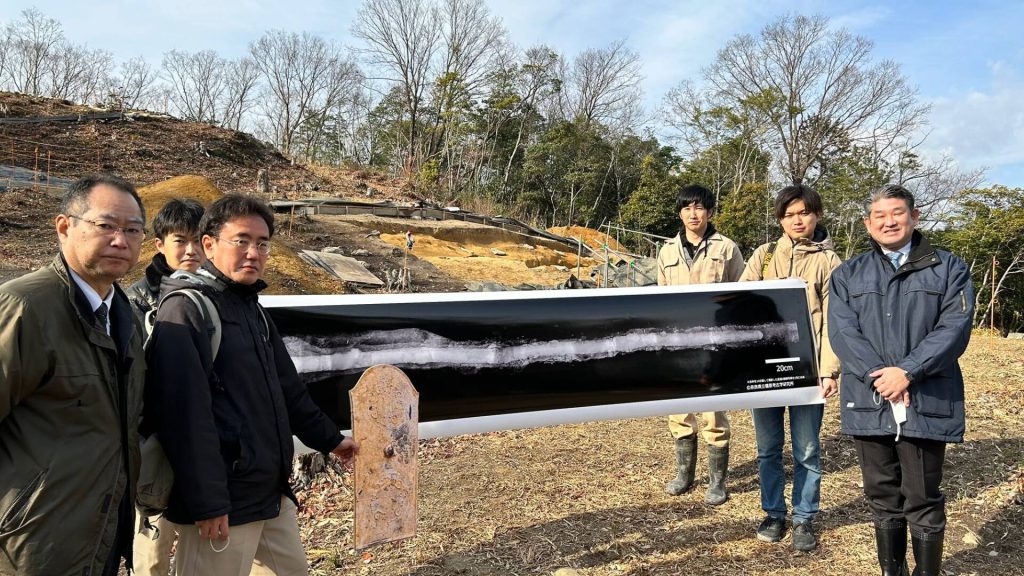
Perhaps – as this discovery seems to indicate – the people of the Kofun Period were more technologically advanced than scholars have given them credit for. The size and quality of the sword sure indicates this. Murase stated, “I was surprised. It was so long that I doubted it was true.”

